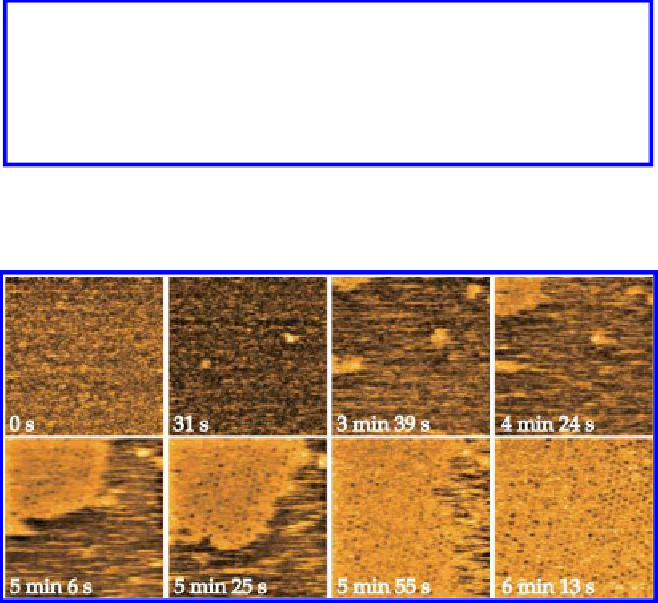Biology Reference
In-Depth Information
hole indicated by the arrow in
Fig. 8.7
(0 second) is occupied by a trimer in
the next frame. This trimer is weakly bound and then dissociates soon at 1
second. The hole is illed again at 1.5 seconds but the trimer is bound more
stably at this time. The dissociation and association of centre trimers occur
at several places in the crystal (images between 18 and 23.5 seconds). This
observation also indicates that unbound trimers exist on the crystal surface
and are rapidly diffusing on it.
High-speed AFM imaging also revealed rotational diffusion of a centre
trimer weakly bound to the surrounding cage.
Figure 8.8
shows the images
captured at 0.2 s/frame. The centre trimer encircled in
Fig. 8.8
(0 second)
rotates counterclockwise with a 60° step. In the cage surrounded with six
trimers in the lattice, the central trimer can assume two stable positions with
identical association energy. This rotational motion indicates the association
energy to be in the order of ~1
k
B
T
.
Figure 8.8.
Rotational diffusion of the annexin V trimer trapped in a lattice cage.
Successive images were obtained at an imaging rate of 0.2 s/frame with a scan area
of 50
s
50 nm
2
.
Figure 8.9.
Crystal growth of annexin V. At 0 second, the image shows only the lipid
surface and a large noise induced by diffusing molecules on the surface. CaCl
2
solution
was injected at 7 seconds. Successive images were obtained at an imaging rate of
1 s/frame with a scan area of 400
s
400 nm
2
.


















Search WWH ::

Custom Search